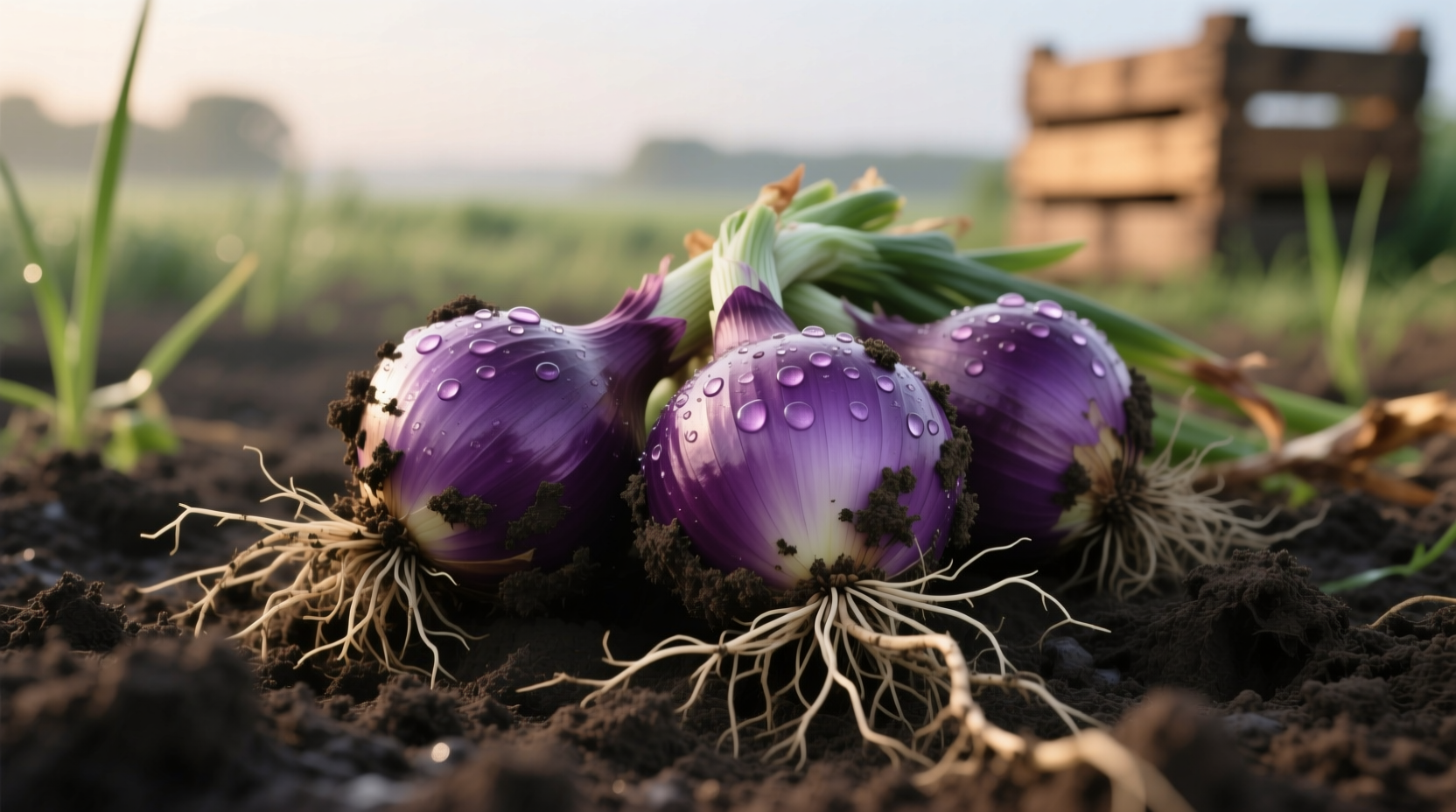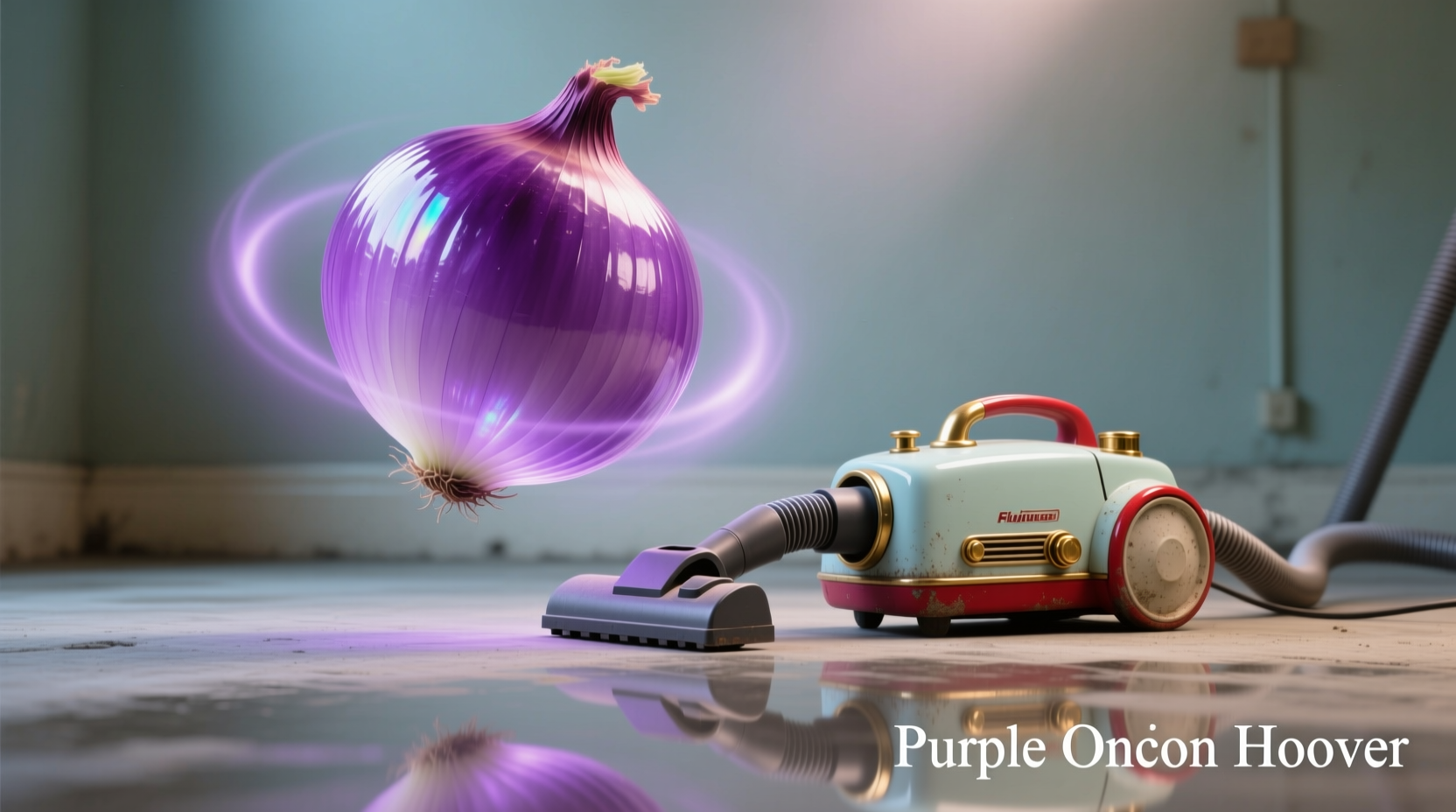Understanding Purple Onions: Beyond the Common Misconception
When searching for "purple onion hoover," many home gardeners and cooking enthusiasts encounter confusion. This term doesn't refer to any recognized gardening tool, technique, or onion variety. The most probable intention behind this search is information about purple onion harvest timing or how to properly handle purple onions after they've been picked.
Purple onions (more accurately called red onions) are a vibrant variety of Allium cepa known for their deep purple skin and reddish flesh. They're prized for both culinary applications and garden aesthetics. Understanding proper harvesting techniques is crucial for maximizing flavor, storage life, and nutritional value.
The Purple Onion Lifecycle: From Planting to Harvest
Before discussing harvest methods, it's essential to understand the complete growth cycle of purple onions. These vegetables require specific conditions to develop their characteristic color and flavor profile.
| Growth Stage | Timeline | Key Indicators |
|---|---|---|
| Planting | Early spring or fall (depending on climate) | Soil temperature above 50°F (10°C) |
| Active Growth | 6-8 weeks after planting | Green tops reach 6-8 inches tall |
| Bulb Formation | 8-12 weeks after planting | Visible bulb swelling at soil surface |
| Maturation | 14-18 weeks after planting | Top leaves begin yellowing and falling over |
| Harvest Ready | When 50-75% of tops have fallen | Bulb necks have tightened and dried slightly |
Why Proper Harvest Timing Matters for Purple Onions
Harvesting purple onions at the correct time significantly impacts their flavor, storage potential, and nutritional content. According to research from the University of California Agriculture and Natural Resources, onions harvested too early lack full flavor development and have poor storage characteristics, while those left in the ground too long may begin to rot or sprout.
The distinctive purple color comes from anthocyanins, powerful antioxidants that develop fully only when onions reach maturity. Harvesting too early results in less vibrant color and reduced nutritional benefits. The USDA National Nutrient Database confirms that properly matured purple onions contain 20% more anthocyanins than immature bulbs.

Step-by-Step Guide to Harvesting Purple Onions
Follow these professional techniques to ensure your purple onions reach their full potential:
1. Determining Harvest Readiness
Look for these visual cues that indicate your purple onions are ready for harvest:
- Natural top fall: Approximately 50-75% of the green tops have naturally fallen over and begun to yellow
- Bulb size: The bulbs have reached their expected mature size for the variety
- Neck condition: The neck above the bulb has begun to dry and tighten
- Skin appearance: Outer skin has become papery and the characteristic purple color has fully developed
2. The Proper Harvesting Technique
When harvesting purple onions, follow these steps for best results:
- Stop watering 7-10 days before expected harvest to allow soil to dry slightly
- Choose a dry day for harvesting to prevent moisture-related storage issues
- Gently loosen soil around bulbs with a garden fork, being careful not to pierce bulbs
- Lift bulbs from soil rather than pulling by the tops
- Allow onions to cure in their natural position for 24 hours before moving
3. Curing and Storage Preparation
Proper curing is essential for long-term storage of purple onions:
- Move harvested onions to a well-ventilated, shaded area
- Spread them in a single layer on racks or screens
- Allow to cure for 2-3 weeks until necks are completely dry and papery
- Trim tops to 1-1.5 inches and roots to ¼ inch after curing
- Store in mesh bags or baskets in a cool, dry, dark location (45-55°F/7-13°C)
Common Mistakes to Avoid When Harvesting Purple Onions
Based on data from the Royal Horticultural Society's gardening surveys, these are the most frequent errors made by home growers:
- Harvesting too early: When less than 50% of tops have fallen naturally
- Leaving onions in wet soil: Increases risk of rot and reduces storage life
- Skipping the curing process: Properly cured onions can last 3-4 times longer than uncured ones
- Improper storage conditions: High humidity causes sprouting; warm temperatures accelerate spoilage
- Using damaged bulbs for long-term storage: Even minor cuts or bruises can spread rot through an entire storage batch
Maximizing Flavor and Nutrition in Your Purple Onions
The flavor profile of purple onions develops fully only after proper harvesting and curing. Research from the Journal of Agricultural and Food Chemistry shows that the pungency compounds in onions continue to develop during the curing process, reaching optimal levels after 14-21 days.
For maximum nutritional benefit, use purple onions within 2-3 months of harvest. The anthocyanin content (responsible for the purple color and many health benefits) gradually decreases during extended storage. When preparing purple onions for cooking, minimize cutting time before use, as exposure to air can degrade some beneficial compounds.
Practical Applications: Using Your Harvested Purple Onions
Once properly harvested and cured, purple onions offer exceptional versatility in the kitchen:
- Fresh applications: Their vibrant color makes them ideal for salads, salsas, and garnishes
- Cooking: When cooked, they mellow in flavor while retaining some color
- Pickling: Purple onions create stunning pink pickled onions that add visual appeal to dishes
- Long-term storage: Properly stored bulbs can last 4-6 months in ideal conditions
Professional chefs recommend using freshly harvested purple onions in raw applications for maximum color impact, while slightly older bulbs work better for cooking where color retention is less critical than flavor development.











 浙公网安备
33010002000092号
浙公网安备
33010002000092号 浙B2-20120091-4
浙B2-20120091-4